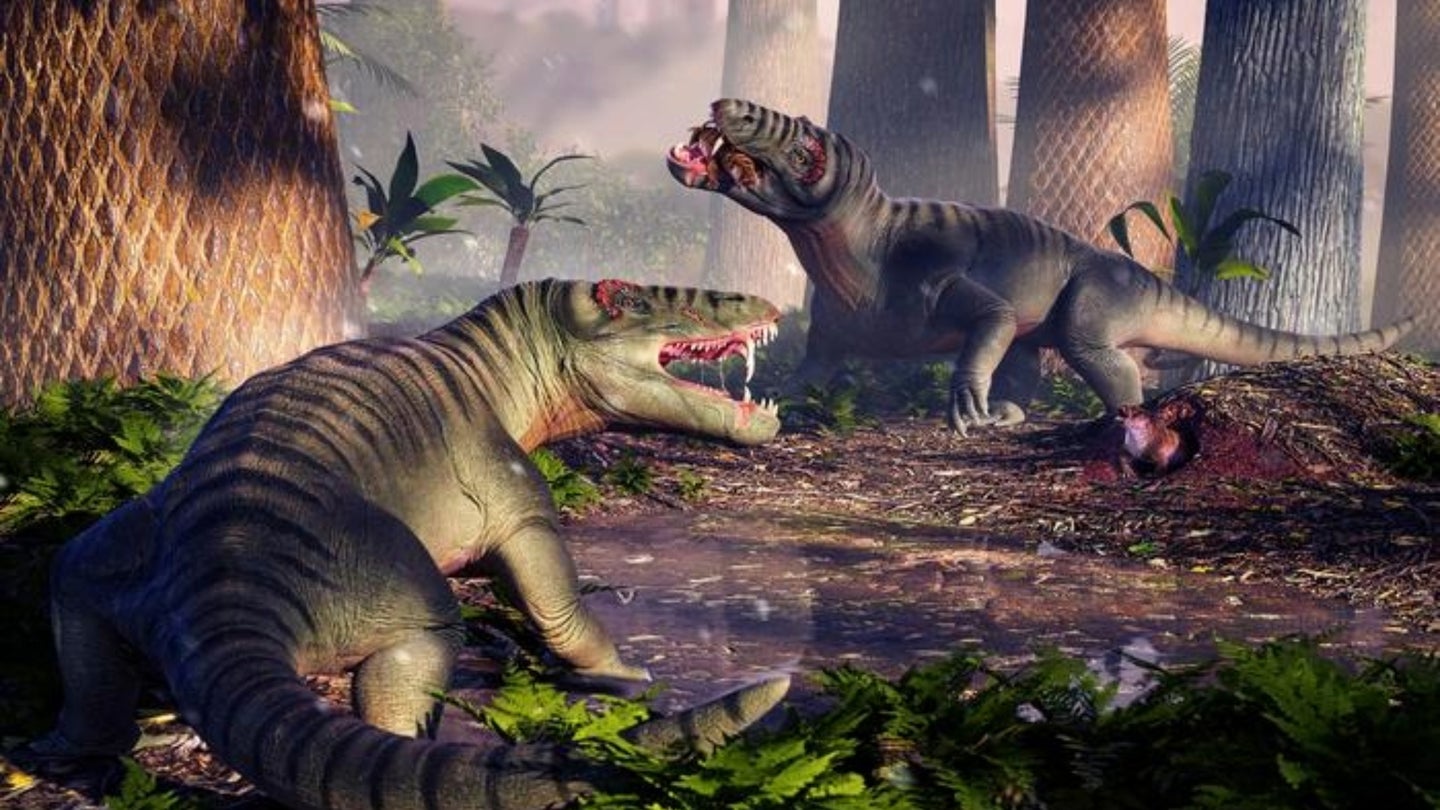This ‘gnarly-looking beast’ terrorized Brazil 265 million years ago
A cow-sized predator ate meat long before the first dino hunted.

It sounds hard to believe, but even before dinosaurs were a thing, big, weird, and sometimes scary animals were wandering around the planet. A newly found example of such an odd creature was discovered in a rural part of São Gabriel in southern Brazil—the Pampaphoneus biccai. According to the researchers studying the 265-million-year-old beast, it was likely the toughest, biggest, and blood-thirstiest carnivore that South America had seen at the time.
“This animal was a gnarly-looking beast, and it must have evoked sheer dread in anything that crossed its path,” Stephanie E. Pierce, a professor at the Museum of Comparative Zoology at Harvard and co-author of a new study describing the creature, said in a statement. “Its discovery is key to providing a glimpse into the community structure of terrestrial ecosystems just prior to the biggest mass extinction of all time. A spectacular find that demonstrates the global importance of Brazil’s fossil record.”
The fossil, found in middle Permian rocks, included a complete skull and some skeletal bones such as ribs and arms. This specimen is only the second of the Pampaphoneus genus to be found in South America, though other similar specimens have been spotted in Russia. Its 15-inch-long skull is the largest of its kind ever found intact. In its prime, the Pampaphoneus would have weighed around 881 pounds (about the size of a full-grown cow) and reached around nine feet in length—a fearful Permian predator, to say the least.
[Related: Move over, Stegosaurus, there’s a new armored dino in town.]
The Pampaphoneus belonged to the dinocephalian clade, which in Greek means “terrible head”—a shout out to their thick cranial and skull bones. This large family of animals were the first non-mammalian therapsid to be scientifically described, and they largely died out before the Capitanian mass extinction event that predated the Permian extinction. Therapsids are a group of vertebrate animals that predate mammals and all of their ancestors.
The Brazilian Pampaphoneus filled the same ecological niche as modern big cats, Felipe Pinheiro of the Paleontology Laboratory at the Federal University of Pampa (UNIPAMPA), said in the release. “It was the largest terrestrial predator we know of from the Permian in South America,” the study co-author added. “The animal had large, sharp canine teeth adapted for capturing prey. Its dentition and cranial architecture suggest that its bite was strong enough to chew bones, much like modern-day hyenas.”
Some of this potential prey has already been identified, such as the tusked Rastodon and the giant amphibian Konzhukovia. But there’s still much to learn about this terrifying therapsid, and its life before the largest extinction event in the history of the planet.